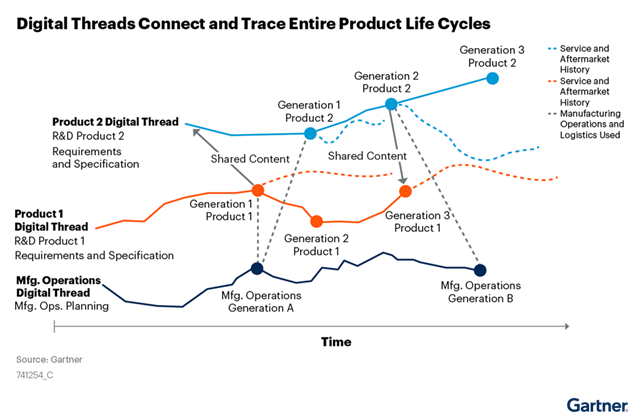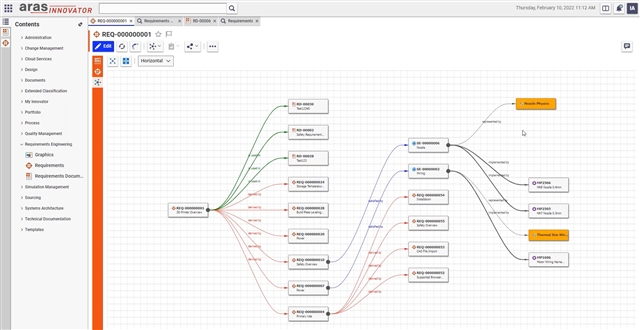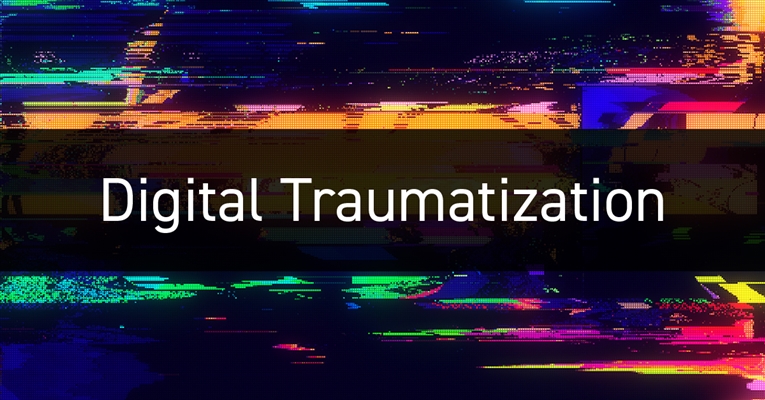Whether it’s attempting to remember how to perform some routine function with your Product Lifecycle Management (PLM) software, making decisions without accurate data, your stalled digitalization efforts, or attempting to collaborate across departmental boundaries, you’ve likely experienced a certain level of trauma that I call “Digital Traumatization.”
I believe that much of this can be avoided if companies maintain focus on the end-users’ pain points while simultaneously keeping in mind a few basic principles, which I will address below.
By doing so, my hope is that you can reduce risk and disruption while transforming your business, providing more business value, achieving greater business resiliency, and becoming more agile with happier and more motivated high-performance teams.
Why end-users?
Clearly, you should target your business’ biggest pain points, but no successful transformation is ever as top-down as you might think. Dictating tasks to people with a myopic view of the organization’s digitalization or digital transformation goals is not a formula for success. People buy into transformations when they understand the impact on themselves, their teammates, the company as a whole, society, and their customers. People who are aware of how they relate to the bigger picture are far more likely to buy in, become passionate, and contribute to a movement (transformation). You should know how this impacts your end-users. If not, you’re increasing your risk of digital traumatization.
What business are you in?
This sounds simple, but if we think about all the companies that no longer exist and those facing extinction, they clearly got this one wrong. All thriving businesses evolve to meet the needs of their future customers, which could involve the adoption of new technologies, new trends, and/or new business models. As an example, let’s take a business model trend—Platform-as-a-Service—and think about how you need to change to support this new model? The focus shifts from building products that you ship and forgetting to build an ecosystem of platforms that harness better insights to data and the ability to support an as-running model beyond the initial point of sale.
Will your PLM software support the new model? Does it adapt as quickly as you need it to? Does it really cover the lifecycle of the product or are you throwing data over organizational walls? Can everyone collaborate in context at the speed you need to outrun your competition?
Legacy products are transformation killers.

Post-Digital Traumatization
Ease of use
The software you rely on must be easy to use. The term “swivel chair” is often used to mean accessing data in one system and manually inputting it into another. There are many forms of this, including the pervasive use of Excel spreadsheets and countless processes that misuse data. Today’s businesses and knowledge workers require access to the correct data using common interfaces on modern end-to-end PLM platforms. As an example, if you’re using PLM software and don’t have a consistent user interface across applications, you’re not just creating pain for your users, you’re losing productivity, increasing human error, slowing down your business, increasing your operational costs, and wasting everyone’s time.
Platform vs. Portfolio
A company’s IT landscape is typically made up of hundreds of applications that have been deployed for seemingly good but tactical reasons. Usually, the longer a company has existed, the more reorganizations and acquisitions they’ve had, the more siloed they become with a myriad of best-of-breed disconnected products and portfolios of products from their vendors of choice. This results in countless integrations, inflexible processes, and data lakes, which, in many cases, end up as data swamps—where data goes to die. This accumulation of product portfolios creates an ecosystem that leaks product data, causing a tremendous amount of inefficiency, cost of quality issues, inhibiting an organization’s ability to transform.
These complex product ecosystems can be greatly simplified with the use of platforms. Companies like Salesforce, Service Now, and Aras provide real platforms with common interfaces and Enterprise SaaS offerings that enable greater collaboration across the enterprise. Shown below is a basic diagram of a platform versus portfolio architecture.

Of course, you may think I am biased, but anyone who knows me well will tell you that this thinking started long before I joined Aras. I saw and felt the pain of digital traumatization in many companies and with several software providers primarily in the PLM and ERP market space. Regardless of any organization, I am a firm believer that building on top of a platform, especially one that is open, flexible, scalable, upgradeable, and supports a robust digital thread, gives you innumerable advantages in any digitalization effort. First and foremost, you will immediately make your business more resilient.
Here is a commentary titled, An Enterprise Digital Transformation Platform - CIMdata 2022 which outlines the advantages of a digital transformation platform.
Digital Thread
A key principle in your ability to transform is having a means to traverse and make sense of the growing amount of product data from engineering, manufacturing, supply chain, and services. Your digital thread, which is really a web of digital threads, enables a framework to help manage your product data, facilitating greater collaboration and better insights across the product lifecycle.
The Digital Thread connects and traces the entire product lifecycle in multiple dimensions as Gartner describes in Innovation Insight for the Digital Thread - Gartner June 2021. It’s more than a single thread traveling across the lifecycle, more than seeing the evolution of a part of an asset back to manufacturing, engineering, functions, logicals, and requirements, but also across engineering disciplines, manufacturing, and your supply chain. It is truly a web of digital threads as Gartner illustrates below.

The hard reality, which CIMdata identifies in their commentary, Digital Thread Are You Progressing? -CIMdata 2021, is that their research shows companies continue to struggle when it comes to digital thread projects.
“This lack of digitalization success is interesting and in CIMdata’s experience at least one of the following three elements has failed: people, process, or technology. Often, legacy technology cannot be adapted to support people and process needs. In general, investigation to determine why the projects are not going as planned and to develop a comprehensive strategy to move forward are required. This will likely result in significant updates to a company’s digital strategy, and in the worst case a restart may be needed.” - CIMdata 2021
The important principle: this isn’t something you build from scratch. As much as possible, this should be part of the platform you use across your product lifecycle. As in the diagram below, this is visual traceability not dependent on Aras applications. This is the power of a platform that can provide bi-directional traceability of any item across the product lifecycle.

“The Aras platform is proven to deliver the technological capabilities required to create and manage digital threads. CIMdata has talked with many Aras customers that have created digital threads. They often comment on the ease of development the low-code platform enables and how they can embrace and extend legacy solutions and configure new solutions. Companies looking to create or extend digital threads need to develop a holistic plan that addresses all the dimensions of the issues, and should evaluate the Aras platform as a solution to enable their plan.” - CIMdata 2021
To learn more here is a case study on how JAMCO, a global supplier of aircraft interiors, make use of their Digital Thread, Aras Innovator Connects a Diverse Range of Systems with Digital Thread as “Global Design Portal.”
Ditch the Legacy Technology
Out-of-the-Box (OOTB) Legacy technologies are the major obstacles that prevent organizations from continually transforming. Reduce the trauma—stop investing in technology, particularly PLM software that limits your people, processes, and use of data.
“CIMdata often sees failures due to legacy technology and strategies. A key takeaway is to not get stuck in the sunk cost fallacy. Continuing to invest in a failed strategy is not a good business decision. Write the loss off and move forward with a more considered approach. For PLM, the product innovation platform is the best-in-class strategy.[5] Business processes must be designed to meet the company vision and business objectives and those processes implemented with a product innovation platform that is configurable and sustainable.” - CIMdata 2021
Enterprise SaaS
To keep pace, it’s no longer just about moving to the cloud, but adopting a SaaS Platform that spans your enterprise product ecosystem. This frees up your resources to focus on what matters most to your organization. Some PLM vendors provide an OOTB SaaS offering. That sounds less expensive. However, the reality is quite the opposite. OOTB drives up costs dramatically because you have no choice but to adapt to the software rather than the software helping you adapt and transform when the market dictates. Additionally, some providers are just hosting virtual machines in the cloud as opposed to a native containerized cloud architecture, therefore eliminating many of the benefits of cloud architecture such as elasticity. Others have created a subset of the functionality they previously had on-premise which makes a hybrid or migration extremely difficult, if not impossible. I submit these examples are nothing better than the same legacy products that have littered your on-premise IT landscapes of the past.
What is required is an “Enterprise SaaS” offering, one that you can configure, customize, and let the vendor upgrade on your schedule, including anything you customize. That’s far less expensive than OOTB! You get it your way at no additional cost. It should be a platform with many applications using the same user interfaces that span your product lifecycle. It should also be open and extensible so you can build your own applications and sunset legacy applications, thus increasing collaboration among users utilizing a digital thread with the traceability and collaboration that will enable you to adapt as your company requires.
“Companies looking for a SaaS-based PLM platform that supports extensive configuration to meet complex business requirements should look at Aras’ Enterprise SaaS platform.” - CIMdata 2022
At Aras, we provide a flexible and resilient platform, Aras Innovator, with an Enterprise SaaS offering, that consists of many applications and a digital thread spanning the entire product lifecycle. This enables companies to continuously transform their businesses, make better data-driven decisions, and adapt their product ecosystem as quickly as possible.
“Companies planning a Digital transformation should consider Aras Innovator as a solution to their digital transformation requirements.” - CIMdata 2022
You cannot transform a business on legacy standalone tools, therefore understanding and matching your business goals with open, flexible, and resilient technology across your product lifecycle is paramount.
I hope these principles help you avoid digital traumatization.
I would also like to invite you to join Peter Bilello, the President and CEO of CIMdata and myself this Thursday for a webinar to discuss why SaaS for PLM is a critical enabler for today’s business transformation. You can sign up for the event here. Check it out!

